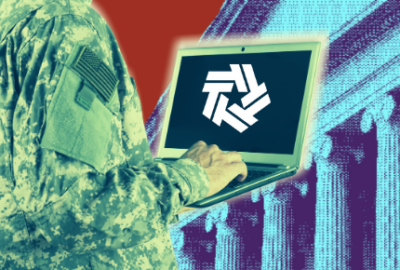

The strategy will bring together elements that allow weapons systems to draw on large amounts of data.
This spring, the organization responsible for identifying the military’s needs for weapons and prioritizing gaps in capabilities will release its principles for a top-down approach to data, software, 5G and other future data-sharing technologies.
The Information Advantage Strategic Directive will be particularly important for military services and contractors because it will set the mark for what the military needs from 5G technologies and other networking equipment as well as the data and space systems that make them possible.
Vice Chairman of the Joint Chiefs of Staff Gen. John Hyten said the Joint Oversight Requirements Council (JROC) is currently working on the document and plans to release it in a couple of months.
“We have a new warfighting concept that’s being developed and that is critically dependent on the network and critically dependent on the data that is transported across that network,” Hyten said Wednesday during an AFCEA event. “We are trying to define what those joint requirements will be that all service capabilities and all service platforms have to plug into to effectively operate and share information.”
5G is only one aspect of the larger directive. Hyten teased last fall that JROC was working on a document that would involve the ubiquitous use of data and revolutionize JROC’s role in the development of weapons.
“In the past a service develops a capability, it comes up through the various coordination boards, eventually getting to the JROC,” he said last September. “We validate a service concept and make sure it meets the joint interoperability requirements.”
This new approach will set standards from the top and make sure the service’s equipment falls into line with those requirements. As such, the requirements will delve into data, software, space systems, precision fires and joint all domain command and control.
“If you just think about data from a 5G perspective there’s three elements of data that we have to be able to focus on to understand where we’re going in the future,” Hyten said. “The first element is: What are our real data requirements we actually need to understand? What the requirements are right now? It’s a little bit challenging to try to figure out what the data requirements are, so we’re going work with services, and we’re going to use some interesting experimentation that’s going on now to define first the data requirements at the tactical edge.”
From there the Defense Department and JROC will determine how that data needs to be transported through air, sea, land and space. 5G will be the land element of that.
The third element focuses on the safe storage of the data DoD is using.
“It’s really easy to say and real hard to do to have a secure cloud environment somewhere where we can access it from wherever we need to,” Hyten said. “The access will be different depending on where you are.”
Getting all three elements together to create a seamless environment where a service member can access mass amounts of data anywhere in the world and in contested environments is still unlikely. However, the JROC strategy is a start for ensuring all systems follow the same requirements to make data sharing easier and faster through technologies like 5G.
Copyright © 2024 Federal News Network. All rights reserved. This website is not intended for users located within the European Economic Area.
Scott Maucione is a defense reporter for Federal News Network and reports on human capital, workforce and the Defense Department at-large.
Follow @smaucioneWFED


